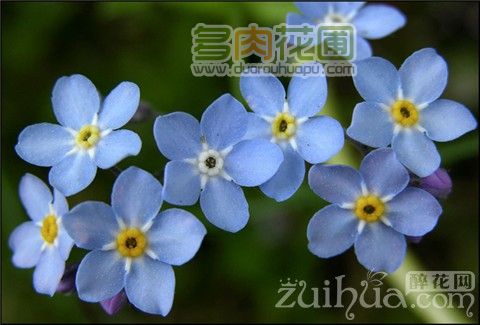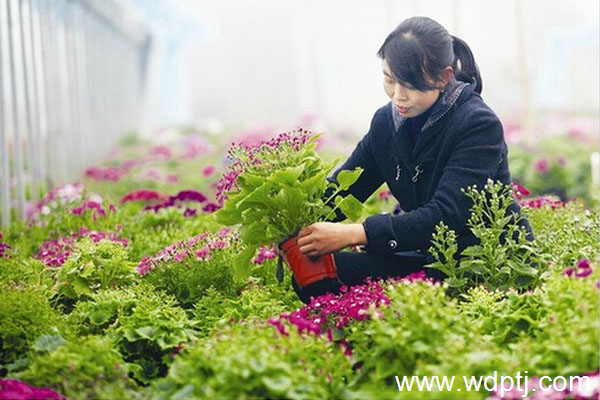Family potted flower winter maintenance method
The central problem of pot flower conservation in winter is to create suitable environmental conditions according to the growth and development characteristics of all kinds of flowers so that they can survive the winter safely and lay a good foundation for better growth and development in the coming year. For a small number of flowers that bloom in winter and early spring, conservation management should continue to be strengthened to make them grow normally so that they can blossom at that time.
1. Enhance the light
Potted flowers have been moved indoors in late autumn or early winter, and the characteristics of different flowers should be taken into account when placed indoors. Flowers that bloom in winter and spring, such as cyclamen, crab claw orchid, daffodil, camellia, poinsettia, etc., as well as flowers that like strong light and high temperature, such as Milan, jasmine, gardenia, white orchid, etc., should be placed on or near the windowsill where there is plenty of sunshine; for flowers that prefer semi-shade in summer and light in winter, such as gentleman orchids and inverted golden bells, they should also be placed in the sunny place. Flowers that like warmth and semi-light, such as asparagus, begonia, rhododendron, etc., can be placed far away from the windowsill; evergreen flowers that like sunlight but can withstand low temperatures, or flowers that are dormant, such as sweet-scented osmanthus and oranges, can be placed in cool places with scattered light higher than 0 ℃.
Indoor flower cultivation should also pay attention to ventilation. In the high temperature or sunny weather at noon, open the window, ventilation, can reduce the occurrence of diseases and insect pests, is conducive to the robust growth of flowers.
2. Control fertilizer and water
In winter, due to low temperature, most flowers enter dormancy or semi-dormant state, metabolism is very slow, the need for fertilizer and water is very little, so, in addition to autumn, winter or early spring flowering flower species, such as gentleman orchid, poinsettia, cyclamen, melon leaf chrysanthemum, camellia, etc., should continue to water and fertilize, general potted flowers should be strictly controlled fertilizer. Stop fertilizing the dormant or semi-dormant flowers; do not water the potted soil if it is not too dry, especially the potted flowers that are shade-resistant or put in a colder place indoors, but also reduce watering to avoid rotten roots and fallen leaves caused by too much watering. Plum blossom, kumquat, rhododendron and other woody potted flowers should also be strictly controlled in winter so as not to cause overgrowth and affect flower bud differentiation. For cactus and succulent plants, water and fertilizer should be strictly controlled in winter, fertilizing as little as possible, watering less, generally about once a month.
3. Keep warm and protect against cold
Most of the flowers and trees native to tropical, subtropical and warm temperate zones have the characteristics of being warm and afraid of cold. The suitable temperature for growth is between 20 and 25 ℃, and grows slowly below 10 ℃. When the temperature drops below 5 ℃, it will stop growing, and when the temperature drops to 0 ℃, it will suffer frost injury. In the area north of the Yangtze River, the temperature is low in winter and there is a cold snap from time to time, so in order to make the potted flowers safely through the winter, cold prevention measures must be taken. According to the overwintering temperature requirements of all kinds of flowers, they can be kept in an appropriate place indoors for maintenance. Potted flowers are usually divided into three categories, and different cold protection measures are taken to keep warm.
The main results are as follows: (1) the flowers with strong cold resistance, such as brown bamboo, cycad, orchid, sunflower and so on, can survive the winter safely without heating and the temperature is above 0 ℃.
(2) the flowers with weak cold resistance, such as rubber tree, duck foot wood, pocket coconut, tortoise back bamboo, sea taro, spring feather, red back cinnamon, etc., can be placed indoors without heating and the temperature above 5 ℃ to survive the winter safely.
(3) the flowers requiring higher overwintering temperature, such as Guangdong evergreen, horsetail iron, arrow leaf taro, green apple, tiger tail orchid, bamboo taro, white crane taro, loose tail sunflower, fish tail sunflower, etc., had better be put in the room with heating equipment and keep the temperature above 10 ℃.
If you live in a building, you can build a simple greenhouse with a bamboo bow on the south balcony. The requirement of the shed is low in front and high in back. It is covered with double-layer plastic film above and around, and the bottom is tightly compacted with bricks. Under normal circumstances, the temperature of this small plastic greenhouse can be maintained above 7: 8 ℃. If the temperature in the shed rises during the windless and sunny day, the thin corner of the plastic facing south can be opened around noon and properly ventilated and cooled when it exceeds 20 ℃. After winter, low-temperature-tolerant flowers, such as pomegranate, fig, oleander, kumquat, peony and sweet-scented osmanthus, can be put in the shed to survive the winter. If you live in a bungalow, you can build a semi-underground simple greenhouse in the sunny part of the courtyard, which can keep the temperature above 5 ℃ in winter.
Winter maintenance of family potted flowers

Fragrance full room: different kinds of flowers have different growth habits, different management measures should be taken to ensure their safety in the winter.
1. Overwintering of deciduous woody flowers: deciduous woody flowers are mostly native to temperate regions, such as pomegranate, honeysuckle, rose, green peach, Yingchun, etc., they are generally dormant in winter, so the room temperature can be controlled at about 5 ℃. If there is a balcony or small courtyard, cold-resistant potted roses and pomegranates can be placed in the leeward of the balcony or in the corner of the courtyard and covered with plastic film to survive the winter safely.
two。 Evergreen woody flowers overwintering: such as kumquat, in a semi-dormant state, the temperature is generally controlled above 0 ℃, you can safely survive the severe winter. For Milan, jasmine, Fusang, etc., it should be placed in a place where there is sufficient sunlight. The indoor temperature should be kept at about 15 ℃. If the temperature is too low, it will lead to the death of flowers.
3. Overwintering of herbaceous flowers in 2012: for perennial herbaceous flowers such as asparagus, impatiens, geraniums and crabapple, they can grow well at 10 ℃ ~ 20 ℃ at room temperature and sufficient sunshine.
Winter maintenance of family potted flowers
China Garden Network, December 8, news: Xinxiang is full of rooms: different kinds of flowers have different growth habits, and different management measures should be taken to ensure their safe winter.
1. Overwintering of deciduous woody flowers: deciduous woody flowers are mostly native to temperate regions, such as pomegranate, honeysuckle, rose, green peach, Yingchun, etc., they are generally dormant in winter, so the room temperature can be controlled at about 5 ℃. If there is a balcony or small courtyard, cold-resistant potted roses and pomegranates can be placed in the leeward of the balcony or in the corner of the courtyard and covered with plastic film to survive the winter safely.
two。 Evergreen woody flowers overwintering: such as kumquat, in a semi-dormant state, the temperature is generally controlled above 0 ℃, you can safely survive the severe winter. For Milan, jasmine, Fusang, etc., it should be placed in a place where there is sufficient sunlight. The indoor temperature should be kept at about 15 ℃. If the temperature is too low, it will lead to the death of flowers.
3. Overwintering of herbaceous flowers in 2012: for perennial herbaceous flowers such as asparagus, impatiens, geraniums and crabapple, they can grow well at 10 ℃ ~ 20 ℃ at room temperature and sufficient sunshine.
- Prev

Maintenance methods of family potted flowers in autumn
1. The management of water and fertilizer after autumn should be treated differently according to the habits of different flowers. For sweet-scented osmanthus, camellia and rhododendron that bloom once a year, liquid fertilizer mainly based on phosphate fertilizer should be applied 2 or 3 times in time to promote flower bud differentiation and bud formation so as to achieve many flowers, large flowers and colorful flowers.
- Next

Temperature requirements for Family Flower Culture
Among the various environmental factors, temperature is one of the important environmental conditions affecting the growth and development of flowers. All life activities of flowers can only be carried out normally under certain temperature conditions. The temperature directly affects the growth and development of flowers. There are many kinds of flowers, different producing areas, and different temperature requirements.
Related
- Fuxing push coffee new agricultural production and marketing class: lack of small-scale processing plants
- Jujube rice field leisure farm deep ploughing Yilan for five years to create a space for organic food and play
- Nongyu Farm-A trial of organic papaya for brave women with advanced technology
- Four points for attention in the prevention and control of diseases and insect pests of edible fungi
- How to add nutrient solution to Edible Fungi
- Is there any good way to control edible fungus mites?
- Open Inoculation Technology of Edible Fungi
- Is there any clever way to use fertilizer for edible fungus in winter?
- What agents are used to kill the pathogens of edible fungi in the mushroom shed?
- Rapid drying of Edible Fungi

